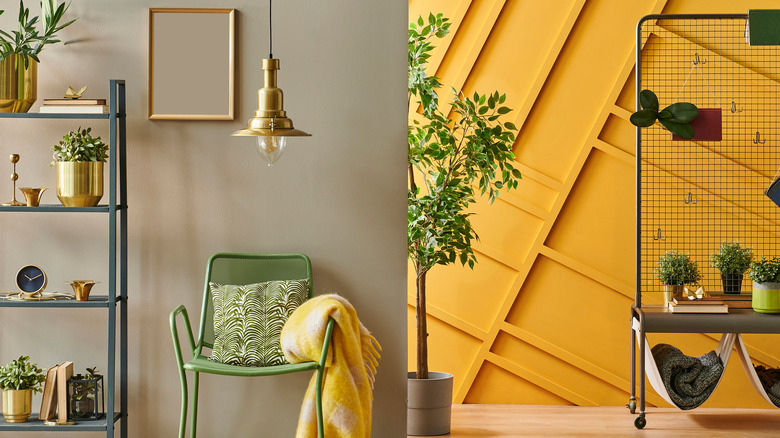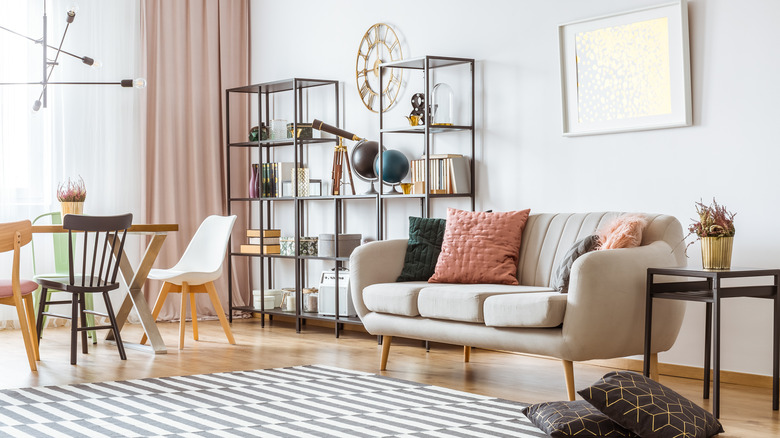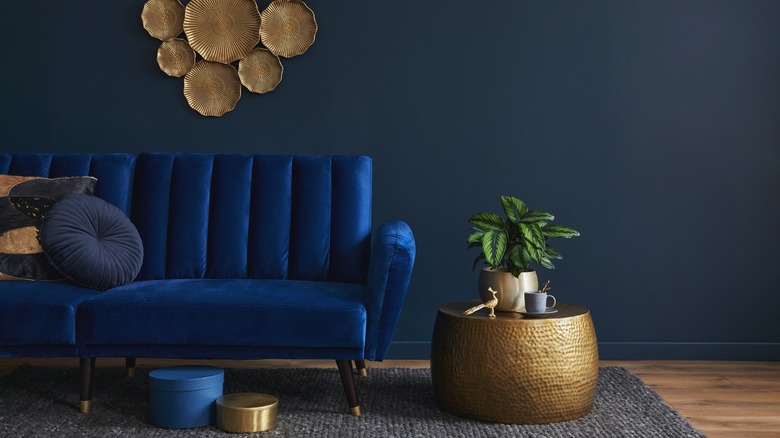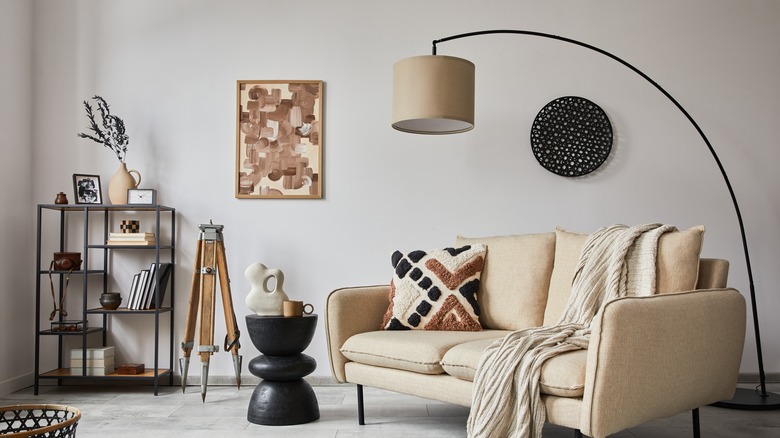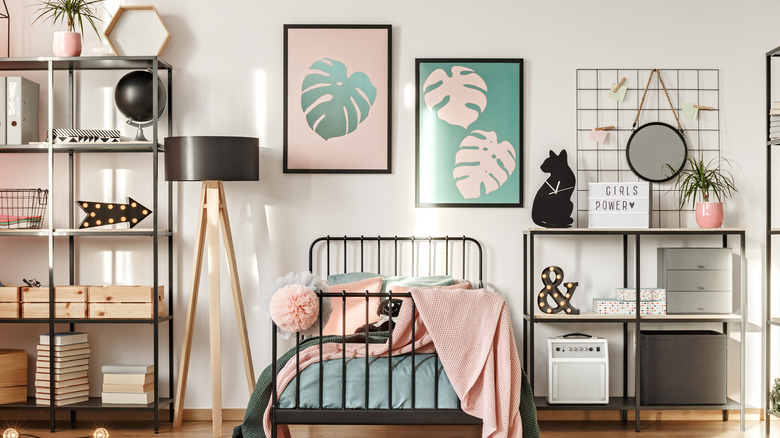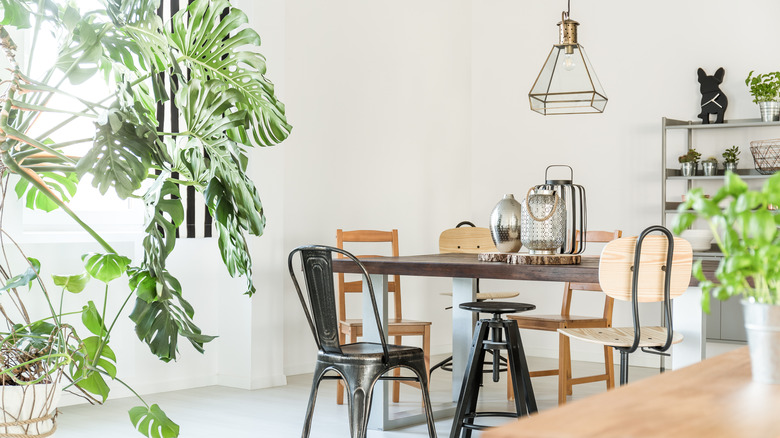How To Mix Metals In Your Home Decor
To a layperson, metals do not have a place in the home décor; however, if you speak to interior designers, this cannot be any further from the truth. Today, a variety of metals have found space in the home interior as statement pieces. According to Luxe Decor, there are different types of metals that you can incorporate in your home, including copper, gold, brass, and iron. Such finishing will bring the much-needed visual appeal that your home has been missing.
While interior design experts advise against the matchy-matchy effect of repeating one metal piece all over, finding a way of seamlessly combining multiple metals in your home décor is easier said than done. There are many variables you need to consider, for instance, your general theme and the needs of your home. The good news is that finding the right combination of metals doesn't have to be rocket science. By following a few ground rules and correct execution, you can easily elevate the appeal of your home. Here are a few ideas that should give you some direction.
Stick to your theme
Right off the bat, it is necessary to mention that even if you are considering adding metal finishes to your décor, it shouldn't deviate from the original design idea. Jane at Home mentions that your home is a reflection of your personality, and incorporating metal finishes shouldn't deviate from that. The right metal for your home should be able to coexist within a given theme without looking out of place. Before adding any metal to your décor, your primary role is to find one that will complement your theme and the items that already exist in your interior space.
To put this into perspective, think about a modern design. Silver or white tones will complement and easily fit into the theme as opposed to brass which will look too bold. On the other hand, a farmhouse theme needs metallic finishes that look closer to wooden tones like brass. Just don't get so caught up in the idea of mixing metals in your home décor that you lose the unique personality in your house.
Select one dominant metal
To make your job easier, consider having one dominant metal as your base color and only include others to complement it. While mixing different metallic finishes in equal measure might seem like a good idea, it fails to bring attention to the primary theme in your home that you should maintain. The dominant metallic theme you choose should also serve as a focal point to bring attention to the right places. Think of mixing metals as building a home; the foundation should be the primary metal you love and complement your home's design theme.
On the other hand, the secondary metallic accents should bring additional glam to the entire structure. When choosing the dominant metal for your décor, be sure to go for the types that are easy to match. Since chrome finishes are essentially the same regardless of the manufacturer, they make a good base finish that also easily accommodates other metallic accents like brass. For a beginner, you will also find chrome quite easy to incorporate into most interior décor styles (via The SoHo Lighting Company). If you choose bronze as your primary metal, be sure to get all the pieces from the same manufacturer to create harmony in your space.
Work with a maximum of three metals at a time
Combining more than three metals at any given time will be the opposite of what you are trying to achieve. When dealing with metals for décor, less is more. You don't want to make your interior feel disorganized and chaotic. For an average DIY homeowner who is inexperienced in mixing metals, MHM Professional Staging recommends working with two types of metals at a time. As mentioned earlier, one should be the dominant color while the other should serve as an accent. You might not figure everything out immediately, but the trick is to start gradually.
Once you identify your base metal color, you will likely know what your space is missing. For example, if you notice that you have a lot of silver and bronze, you can throw in a third metal if you still need it. To avoid confusion and making the space look too busy, go for the same finishes for all the metals you choose to include in your home's interior. Some popular finishes include matte, hammered, satin, and polish, just to mention a few.
Start with the metal present
If you are stuck and don't know where to begin, take inspiration from what is currently available around your home. Almost every home has several pre-installed metal features, for instance, lighting fixtures or faucets. Although not given the credit they deserve, Kara Cox Interiors thinks they are the unsung heroes of interior décor. Not only are they functional, but they also contribute to the interior décor when installed properly. While they might not have been in the plan from the beginning, they can create a base for where you can start.
Also, if you don't want them to be your primary color think about finding other metals that complement the colors you want to emphasize. On the other hand, if you don't like the existing metal finishes, consider replacing them with your color of choice. This is particularly helpful during a home renovation. Keep in mind that changing the metal fixtures around your home requires quite some effort. Having a color that you don't like recurring everywhere in your house is no fun. For this reason, changing the hardware around your home can give you the perfect starting point.
Keep in mind that opposites attract
When you want to incorporate metal into your décor but don't know where to begin, one rule of thumb that you should always stick to is opposites attract. Yes, this concept from high school physics is also quite applicable when mixing metals in your home décor. Contrasting metal tones like silver and iron or brass and bronze will save you from an unnecessary eye sore created by a mismatched combo. Combining opposite tones makes the whole design process more deliberate and purposeful. In fact, interior designers have been using colors on opposite sides of the wheel to achieve contrast. The introduction of contrast in the home interior is important to attain the right balance and profound visual interest, mentions Hudson & Crane.
Metals with similar tones, for instance, copper and gold, will feel out of place and might be mistaken for a design error. While the rule of mixing contrasting colors works most of the time, it still leaves room for experimenting. Remember, it is vital that you go with the colors that you like. Never feel pressured to combine colors that do not make sense to you just to ride along a short-lived trend. Achieving the right combination involves a careful combination of different aspects, including your personality as an individual.
